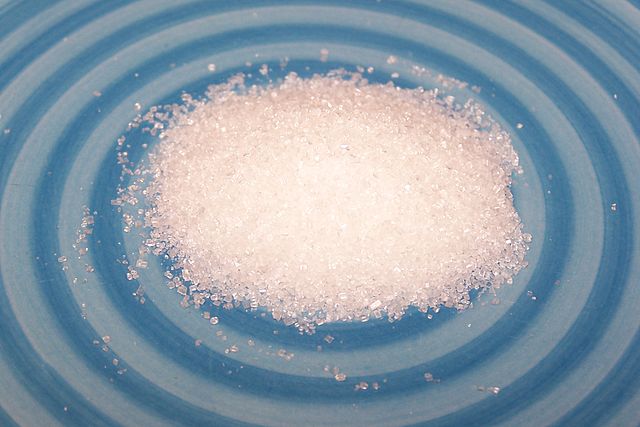White Sugar vs Caster Sugar
Understanding the difference between white sugar and caster sugar will help you comprehend why some recipes specify the type of sugar to be used. We are all familiar with the table sugar that is commonly used in households, which is known as white sugar. However, there are other types of sugars with finer textures than the commonly available crystal form. One such type is caster sugar, a superfine sugar that looks similar to powder. This is one primary difference between white sugar and caster sugar. However, there are more than just physical differences between these two types of sugar, which will be discussed in this article.
What is White Sugar?
White sugar is the standard white-colored sugar we all use at home. However, it is not the first direct product of sugarcane. When sugarcane is harvested, it is brought to a factory where machines crush the sugarcane plants to extract the juices. Lime is then added to this juice to achieve the necessary pH level and remove any impurities. This mixture is evaporated, and what is left is passed through a centrifuge to produce crystals. These crystals are raw sugar, the first product from sugarcane. To make white sugar, sulfur dioxide is added to cane juice before it gets evaporated. This gas bleaches the juice so that it does not turn brown and produces white sugar. At later stages, phosphoric acid, calcium hydroxide, or carbon dioxide is added to absorb impurities. This juice is then filtered through a bed of carbon and crystallized in a vacuum several times. Finally, the crystals are left to dry on their own to create paper-white crystals of sugar.
White sugar made in this manner is used for daily needs, such as making tea and coffee. It is also used in various recipes. White sugar comes in many varieties, including Coarse Grain, Granulated Sugar (Table Sugar), Caster Sugar (Superfine Sugar), Confectioner’s Sugar (Powdered Sugar), and Lump Sugar (Sugar Cubes).
What is Caster Sugar?
Caster sugar is one of the many varieties of white sugar. The grains of caster sugar are so small that they can pass through a sprinkler or caster, which is why this type of superfine sugar is called caster sugar. Interestingly, it is called superfine sugar when marketed in the US, while people in British Columbia call it berry sugar. The fineness of caster sugar allows it to dissolve in liquids within seconds without stirring. This makes it popular for use in meringues and other cold liquids. Caster sugar is also used to make mousses and custards. Unlike confectioner’s sugar, caster sugar is prepared with the help of a blender. It can be produced at home by churning white sugar in a food processor for a few seconds. However, wait a few moments before opening the jar to let the sugar dust settle.
Caster sugar is used in making custards.
What is the difference between White Sugar and Caster Sugar?
• White sugar is one type of sugar produced from sugarcane extracts. It has many varieties, and caster sugar is one of those varieties.
• In daily life, white sugar refers to the table sugar we use for various purposes. Caster sugar is also known as superfine sugar in the US.
• Caster sugar has smaller sugar crystals than white sugar.
• Due to its fineness, Caster sugar dissolves much more quickly than white sugar and is therefore very useful in meringues and other cold liquids.
• White sugar is used for food and to make beverages. Caster sugar is used to make meringues, mousses, and custards.
• You can make caster sugar at home by simply grinding table sugar in a food processor. Before opening the food processor after grinding, wait until the sugar dust settles down.
As you can see, white sugar and caster sugar are different. They have different purposes and appearances regarding the size of the sugar crystals. One main fact remains common to both: excessive consumption of either can lead to health problems such as diabetes.
